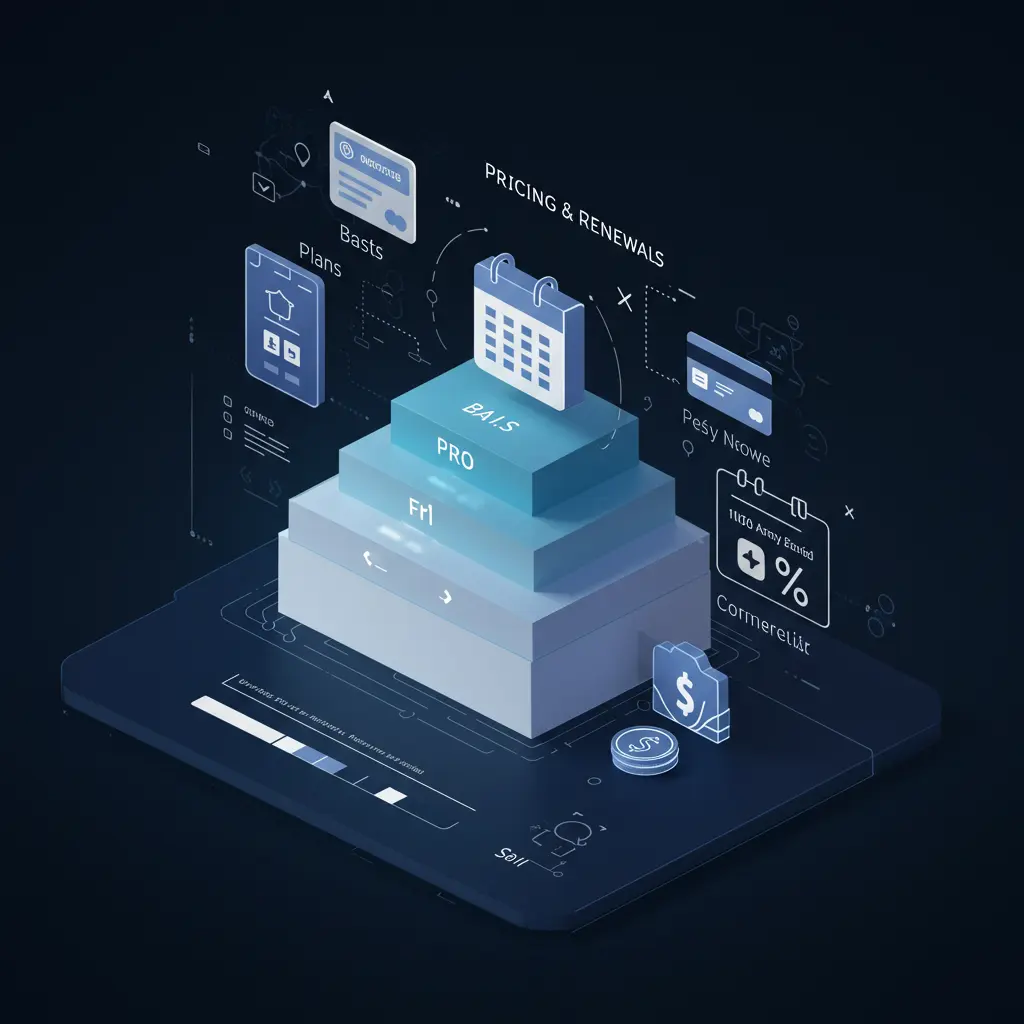Selling digital goods including software, templates, E-books, graphics and courses has grown to be a profitable enterprise in the current digital economy.

However, a business license is necessary to safeguard your intellectual property and specify how clients may use your goods. This post explains the meaning of a commercial license, its significance, and how to draft one for your digital goods.
What is a Commercial License for Digital Products?
A legal contract known as a commercial license gives users the authority to use a digital product for commercial or profit making endeavors. In contrast to personal licenses which limit use to non commercial purposes, commercial licenses enable purchasers to:
- Redistribute, alter or resell the product (with certain restrictions).
- Utilize the product for tasks with clients.
- Add the product to their own line of company products.
This license guarantees that you maintain ownership and control over the product’s distribution even while customers may profit commercially from it.
Key Components of a Commercial License Agreement
When drafting a commercial license for your digital products, include these essential clauses:
1. License Scope
The precise rights and restrictions specified in a commercial license for a digital property are referred to as the licensing scope. Buyers are guaranteed to know if they can use the asset for personal projects, business endeavors, client work or resale if the license scope is clearly indicated.
For instance, an Extended License may permit use in things for sale (such as T-shirts or templates) but a Standard Commercial License may permit use in marketing materials or website designs. While some agreements permit limitless use others restrict usage to a specific number of final products or users.
The creator’s rights are safeguarded and buyer abuse is prevented by explicitly defining the license scope. Additionally, it assists the buyer in making well informed choices, particularly if they require multi user or extended rights. To prevent misunderstandings or future legal problems, always thoroughly read and explain the license scope.
2. Permitted Uses

The precise ways that a customer is permitted by law to utilize a digital product under a commercial license are outlined in the Permitted Uses section. Creating marketing materials, utilizing them in business presentations, developing client projects and integrating them into websites, social media posts or branding are some of these applications.
For instance, a commercially licensed graphic or template can typically be used to make business cards, logos or other promotional materials for a corporation. Certain licenses might also permit restricted use in digital resale or print on demand goods, as long as the asset is included in a fresh, unique design and isn’t sold “as it is.”
The type of license (standard or extended) determines the permitted uses, thus it’s critical that both buyers and sellers understand what is and is not permitted. Sellers can guarantee ethical usage of their digital items while granting customers the freedom to use them in approved, commercial ways by explicitly outlining the permitted uses.
Commercial License for Digital Products
3. Restrictions
To safeguard the creator’s intellectual property, restrictions in a commercial license specify the uses of a digital product that are not permitted. These guidelines make sure that consumers do not improperly use, share or claim ownership of the goods. Reselling the product exactly as is, giving it away for free, or using it in trademarked logos without the required authorization are examples of common restrictions.
Generally speaking, buyers are not permitted to transfer, sublicense or change and resell the original file without making substantial changes. If someone buys a graphic, for instance, they cannot just upload it to another marketplace and sell it unaltered.
Unless an extended license is bought, certain licenses also prohibit the usage of digital items in mass manufacturing (such as more than 500 or 1000 pieces). Legal repercussions, listing removal or even accusations of copyright infringement may result from breaking these limitations. Therefore preserving confidence and legal safety in digital commerce requires an understanding of and adherence to license constraints.
4. Attribution Requirements

The terms under which a consumer must provide credit to the original developer of a digital product when utilizing it are known as attribution requirements. Certain commercial licenses, particularly those that are free or subject to Creative Commons rules, could mandate that users include the name, website or specific credit line of the creator wherever the product is used.
For instance, the license can require you to include a sentence like “Design by [Creator Name] via [Website Name]” if you use a free graphic in a blog post or video. This preserves openness and appropriately acknowledges the creator’s contribution.
Attribution is not necessary for many paid commercial licenses, though particularly if the buyer has acquired a premium or extended license. Never the less, it’s crucial to thoroughly study the licensing terms because neglecting to provide the necessary credit may result in license violations or other legal problems. Always include attribution in the finished output in a clear and noticeable manner when it is necessary.
5. Liability & Warranty
A commercial license’s Liability & Warranty section outlines the creator’s obligations and legal restrictions with regard to the digital product. The developer does not promise that the product will satisfy the buyer’s exact needs or work flawlessly on all platforms or applications, as is the case with most digital product licenses that contain limited or no warranty clauses.
Additionally, this clause typically declares that the product’s maker is not responsible for any losses, damages or legal claims brought about by the buyer’s improper use or misuse of the product. For instance, the author is usually not held accountable if a customer utilizes a graphic in a trademarked logo and runs into legal trouble.
This provision is frequently included by creators to shield them against uncontrollable legal conflicts. Conversely, consumers are supposed to use the product responsibly and in accordance with the terms of the license. Both parties can prevent misunderstandings and guarantee a clear agreement by being aware of the liability and warranty sections.
https://legalgoodness.com/blogs/blog/personal-use-vs-commercial-use-license-for-digital-products
6. Termination Clause
A commercial license’s termination clause specifies the circumstances in which the license may be canceled or revoked. This provision is essential because it grants the creator the authority to legally end the license in the event that the customer breaches any of the terms of the agreement, including improper use, redistribution or unapproved resale of the digital product.
The buyer is legally obligated to promptly cease using the product, remove it from any projects, platforms or materials and erase any copies after the license expires. In extreme circumstances, the inventor might also file a lawsuit or seek damages.
This provision guarantees that the buyer complies with the rules and safeguards the creator’s intellectual property. To learn what behaviors can result in termination, buyers should carefully read this section. Honest adherence to the license conditions guarantees ongoing usage rights and promotes buyer seller confidence.
7. Pricing & Renewals

The cost of utilizing the digital product and the conditions under which the license may need to be renewed are referred to as pricing and renewals in a commercial license. The scope of use frequently determines pricing; for instance, personal use licenses are typically less expensive but commercial or extended licenses are more expensive because they grant additional usage rights.
Certain licenses are one time purchases that grant the buyer lifetime use as long as they adhere to the terms. Others including software, templates or membership based resources, might be subscription based or have an annual renewal period. Access to updates, support or other features could be included with renewals.
Buyers should be aware of what their payment covers, including any future improvements. To preserve usage rights is renewal necessary? To prevent misunderstandings, these details should be communicated explicitly. Clear pricing and renewal procedures promote trust and guarantee a positive experience for both the client and the creator.
Benefits of Offering Commercial License for Digital Products
| S.NO | Benefits | Description |
| 1 | Protects Your Intellectual Property | A commercial license gives you legal backing to prevent unauthorized resale, copying or misuse of your digital products. It helps maintain the integrity and value of your original creations. |
| 2 | Clarifies Usage Rights | Clearly outlines what buyers can and cannot do, such as using the product in client work, reselling, or modifying. This avoids confusion and sets proper expectations from the start. |
| 3 | Generates Revenue | Businesses and creators are usually willing to pay extra for commercial usage. This opens an opportunity to create tiered pricing one for personal use, and one for commercial use. |
| 4 | Reduces Legal Risks | By having clear licensing terms, you minimize potential legal disputes. If someone misuses your work, you have the legal authority to take action using the license agreement. |
How to Implement a Commercial License for Your Digital Products
- Draft a Clear License Agreement – Use templates or consult a legal expert.
- Display License Terms Before Purchase – Ensure buyers understand usage rights.
- Offer Different License Tiers (Personal, Extended, Enterprise) for varied pricing.
- Use Digital License Keys or Watermarking to track usage.
- Enforce Violations – Issue takedown notices for unauthorized distribution.
Conclusion:
In order to maximize earnings potential and legally safeguard their work, creators and enterprises must comprehend and apply a commercial license for digital products. In order to ensure clarity between the customer and seller, a well-structured commercial license agreement lays out the essential elements, including usage rights, restrictions and pricing.
Digital product owners who provide a commercial license not only open up new revenue sources but also draw in a more upscale clientele that respects moral and lawful usage. Additionally, it lowers the possibility of abuse or intellectual property theft while boosting brand reputation. Clearly defining terms, incorporating the license into your sales platform and educating your clients are all necessary for a successful commercial license implementation. A commercial license, when used properly, turns your digital goods into scalable, safe and long lasting company assets.
Q: Is a commercial license the same as personal use?
A: No. Personal use allows the product only for private or non-business use, while a commercial license permits usage in professional or business contexts.
Q: Can I customize license terms for different products?
A: Yes. You can create flexible licensing terms based on the type of product, usage level or pricing tier.
Q: Do I need legal help to write a license agreement?
A: While not mandatory, consulting a legal expert ensures your license terms are enforceable and protect your rights fully.
Q: Can it attract more serious customers?
A: Definitely. Businesses and professionals often prefer licensed products to avoid legal issues.